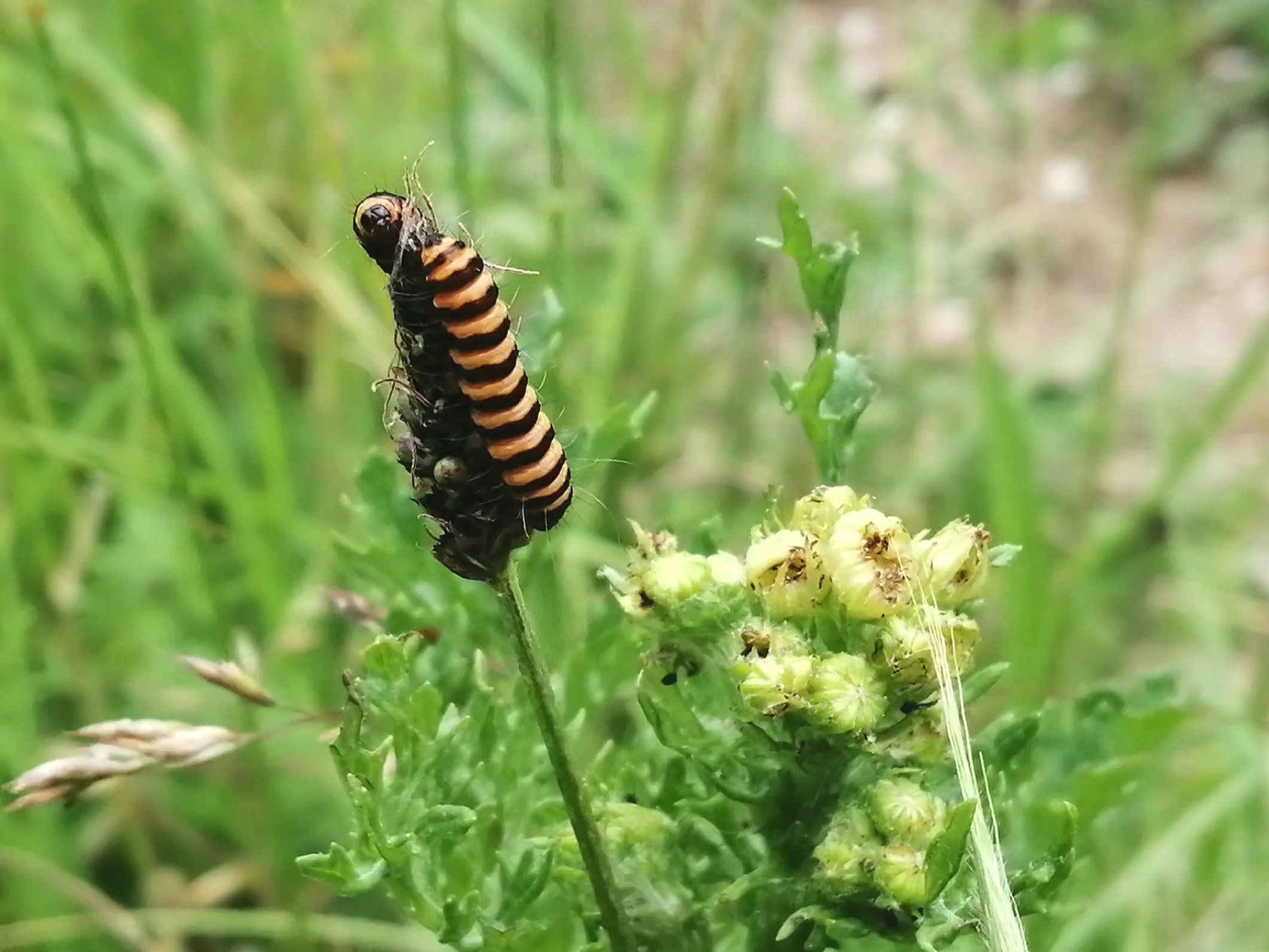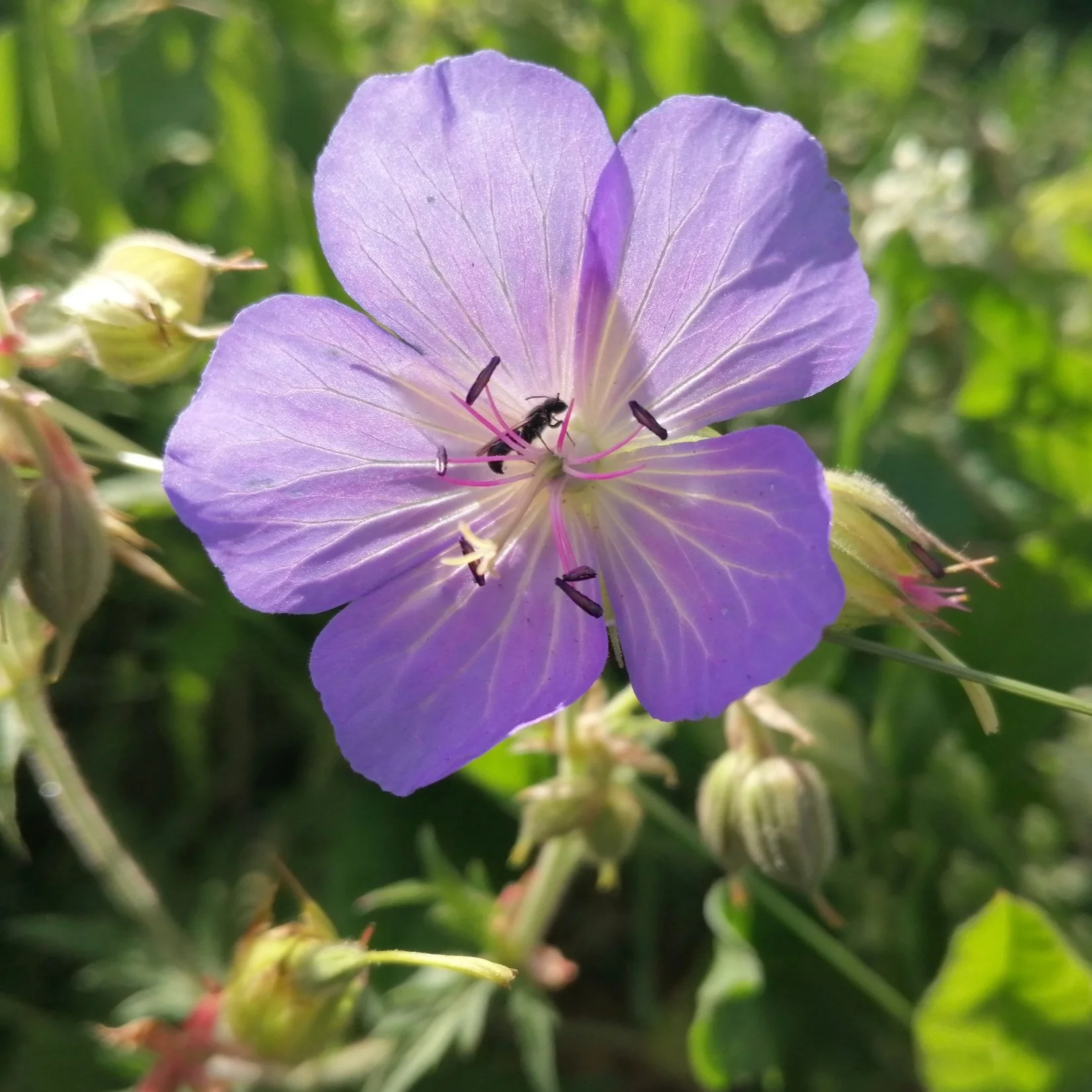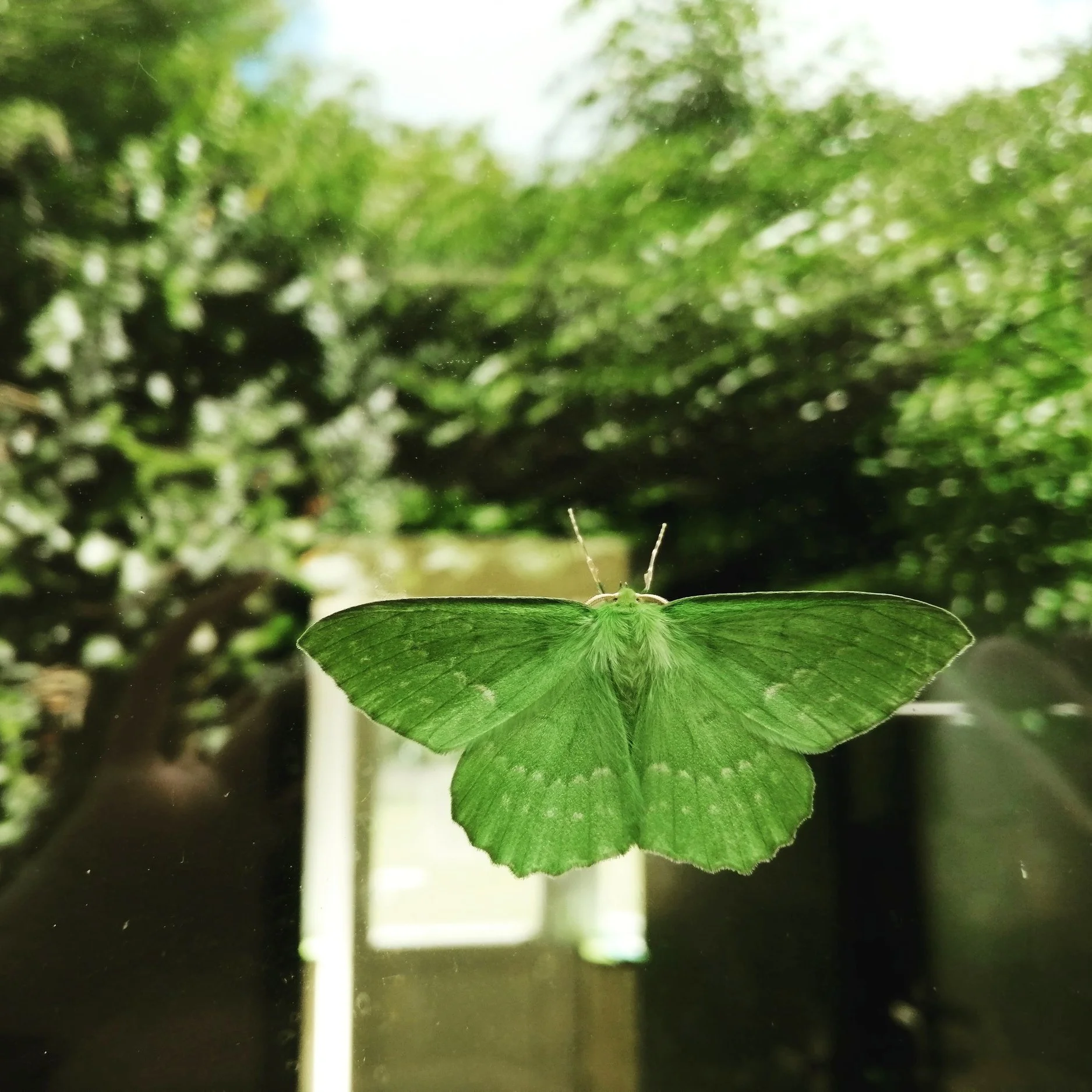Week Seven: Moths and Meadows-bills
I’m a firm believer that we are surrounded by wildlife on a day to day basis. We just need to learn to actively pay attention to it rather than let it melt into the background unnoticed. So, week seven of the Summer ID Challenge, is made up of the wild things I found whilst going about my day to day business; working, dog walking, heading out to the shop etc.
I’m lucky that my work, as a dog walker and a cleaner on a campsite, allows me to spend lots of time outdoors surrounded by nature, but there is just as much in the cities and towns that we live in (as this weeks regular blog post will look at). Unfortunately, this week’s Summer ID challenge doesn’t include urban wildlife - but there’s a future challenge right there.
Anyway - let’s get stuck in to week seven…
Cinnabar Moth Caterpillar (Tyria Jacobaeae)
Cinnabar Moth Caterpillar
This stripy little fellow was hanging out at Martin Down Nature Reserve. The bold yellow and black stripes were hard to miss amongst all the greenery as I took Millie out on her daily wander.
It’s species I’d seen plenty of times before, and admired, but never thought to investigate (I don’t know why!!!). Using my Seek app, I snapped a quick shot and was rewarded with the knowledge that this was indeed a; cinnabar moth caterpillar.
This means that when it emerges from it’s underground winter pupa it will take on the form of the dramatically coloured, red and black cinnabar moth, where it will live out its days in open spaces, such as as heath lands and meadows. The bright colourings of both the caterpillar and the moth act as a deterrent to birds - a beautiful defence system to prevent them from being eaten.
According to Buglife the caterpillar feasts on ragwort - a plant poisonous to plenty of other species, and if there are numerous caterpillars on one plant they can quickly reduce it to nothing but a stalk.
These stripy little caterpillars can be seen feeding from July to September, and the stunning adult moths they emerge into are on the wing from May until August.
Now to just find a cinnabar moth.
Meadow Crane’s-bill (Geranium pratense)
Meadow Crane’s-bill
The hedgerows around the sleepy village of Ebbesbourne Wake in the Chalke Valley, are dusted purple with an abundance of this delicately coloured wild flower (and just to clarify it’s the flower i’m identifying and not the insect in the middle).
Again, this is something I regularly see whilst out walking my customer’s dogs and have never investigated up until now.
This violet coloured wildflower is meadow crane’s-bill - again identified with the Seek app and then confirmed using the Wildlife Trust’s Wildlife Explore website. It makes its home in verges, meadows, grassland and even gardens as it paints the countryside purple from June to August.
The Wildlife Trusts explain that this wild flower is particular nectar rich, and popular with the pollinators. Whenever I stop to look at this beautiful flower it is always teeming with life - it’s a right little social hub bub for the bees and insects of the Chalke Valley.
Large Emerald (Geometra papilionaria)
Large Emerald Moth
It was whilst mopping the floors at my regular cleaning job at the local campsite that I fell in love with this beauty. Even it’s name, large emerald moth, suggests what an absolute gem this find is. It was hard to miss this lichen green moth that had attached itself to the window and I quickly downed tools to head outside and take a photo.
It was this photo that helped me ID it as a large emerald, using the Collins Wild Guide Butterflies and Moths. It could easily be confused with the common emerald, but my subject didn’t have the darker band that traces the edges of the common emeralds wings.
This stunner is relatively common and is found in a wide range of habitats such as deciduous woodlands, moorlands and in hedgerows during mid summer.
It’s beautiful green colour will gently fade as the moth ages, but I don’t think it will fade at all in beauty. I know we shouldn’t have favourites but I’m pretty certain that I can add this to my personal favourites list. The things you can find whilst at work!!






